We recently connected with Pat Shepherd and have shared our conversation below.
Pat, appreciate you joining us today. How did you learn to do what you do? Knowing what you know now, what could you have done to speed up your learning process? What skills do you think were most essential? What obstacles stood in the way of learning more?
I started out taking watercolour lessons from well known artists as an adult. The mix and flow of paint was addictive. There was something about the “surprises” with watercolour that really appealed to me. It allowed you to be as loose as you wanted to be or as controlled as you liked. The medium allows you to take chances
Paintings started to accumulate because the cost of framing was expensive. Enrolling in a framing course meant I could frame my own work and cut my own mats. The equipment also allowed me to frame for some of the members of the art clubs I belonged to.
An accident left me with a fused wrist and damage to the fingers of my dominant hand. Since I couldn’t frame anymore, I started to dabble in acrylic and oils on my own. Attending workshops or demos was fun but developing a style took longer.
Looking back I think finding a mentor or course to teach me basic skills would have helped me so much. Experimenting and learning on your own is fine but I was missing the all important underlying skills. The course I took in colour theory was really useful and I was always watching how others mixed colours. I missed the essential skills of blocking in, composition and underpaintings which I’ve picked up from watching artists and videos but it’s still not second nature to me. It’s something I focus on now but am too eager to get in to the details and I have to restrain myself from hurrying past the important steps. Seeing the “big” shapes is so important.
When physiotherapy wasn’t very successful, I became discouraged and stopped painting for a few years. The need to paint and express myself was still there though and I decided to paint an animal thinking it would be easier to manage. It seems that capturing the expression or essence of the subject became my primary goal.
Not really sure where to start or what to do, I began with the eyes. And things came alive. The desire to capture the expression or “spirit” of what I was painting drove me on. There were many mistakes as I tried to learn what to do having no idea about underpaintings or layers. Watercolour was spontaneous and using acrylics or oils was completely different. Someone called me an “animal expressionist” which was encouraging.
Just recently I have taken a couple of animal painting courses online. I’ve found I still stick to the way I’ve taught myself to work but added in some of the things I’ve learned. I even took a 7 week, 30 minute challenge of painting animals and loved how it freed me up to get going and stop worrying.
Most artists face the same obstacles – time, money, work and family responsibilities. Early on, living in a rural area also meant travelling to get to courses. Luckily, online courses are so easy now to access. I continue to take courses and attend online demos whenever they are available.
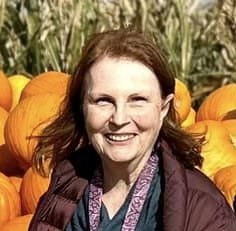

As always, we appreciate you sharing your insights and we’ve got a few more questions for you, but before we get to all of that can you take a minute to introduce yourself and give our readers some of your back background and context?
I loved my careers but the pressure and work responsibilities of solving problems and advocating for others could be draining. My outlet was to take “art” vacations with courses in natural settings. Art wasn’t a possibility when I was younger but even in university, I would take one art course per semester to keep me going. Then there were years when family kept me busy. My advice to those who want to paint is to prioritize what you love. Life can change in an instant and you shouldn’t regret not pursuing your creativity.
I look for the soul of the animal when I paint even it’s an amusing painting. When someone looks at it, I want them to feel that I’ve captured the essence of that being. People who collect my paintings say they can see the personality in the animal’s eyes or attitude. I use the same approach with portraits as I want the painting to tell about the person’s life and allow you to connect if even for a moment. And I’m told my landscapes make them remember a place or a walk so that they feel like they’re there. Setting a mood has become increasingly important in my work.
If a painting makes you fall in love, remember and feel the place, or have sweet memories, I’ve done my job.
Commissions are not part of my work although I do get asked often. It takes the fun out of painting and makes it “work” although I’m sure it would be lucrative. If a friend has lost a pet, I search for photographs and gift them a painting.
I’m an animal lover, a lover of nature and a keen observer of the expressions of animals and people. I think people can feel the joy, the smile and the love I feel for what I paint.
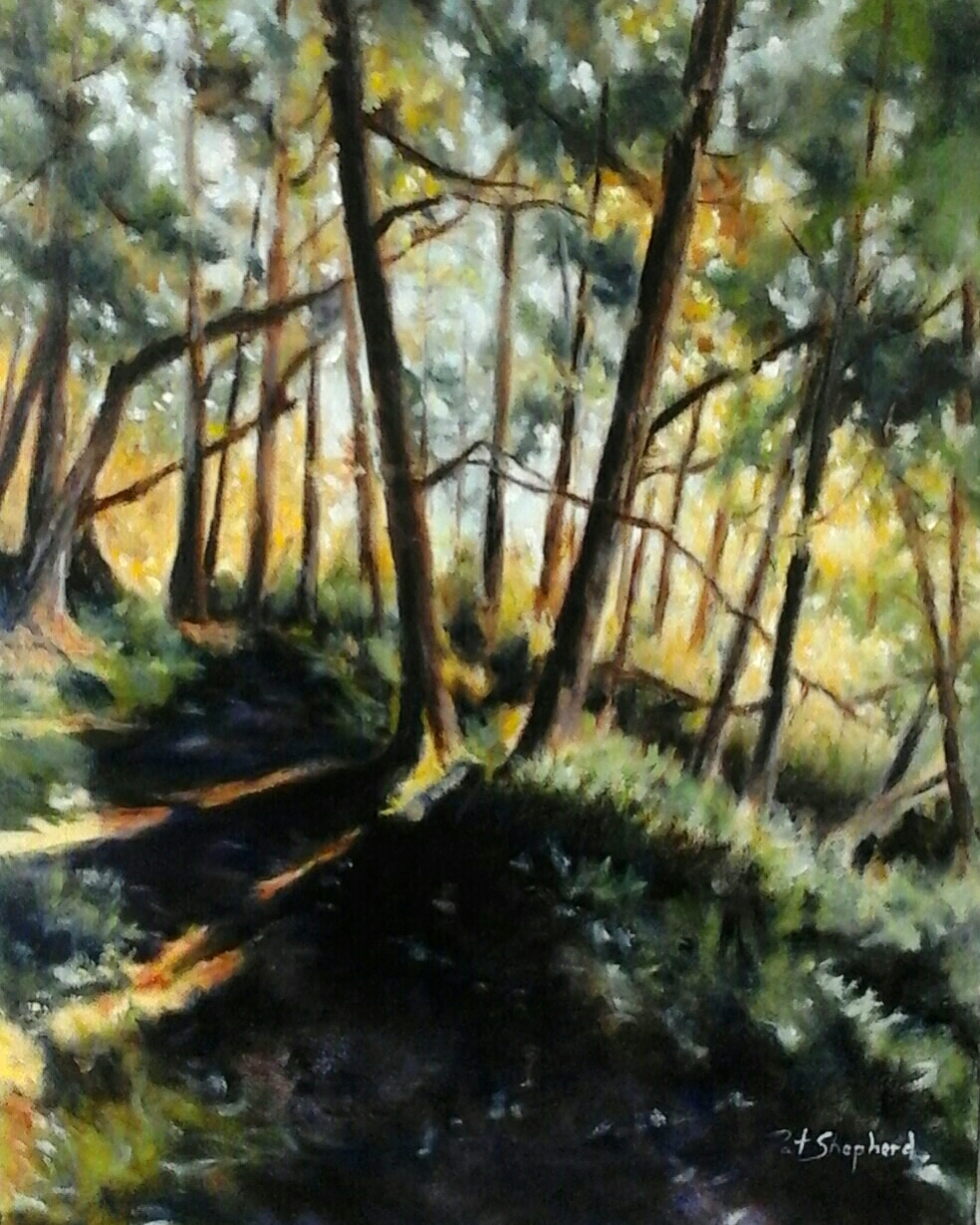
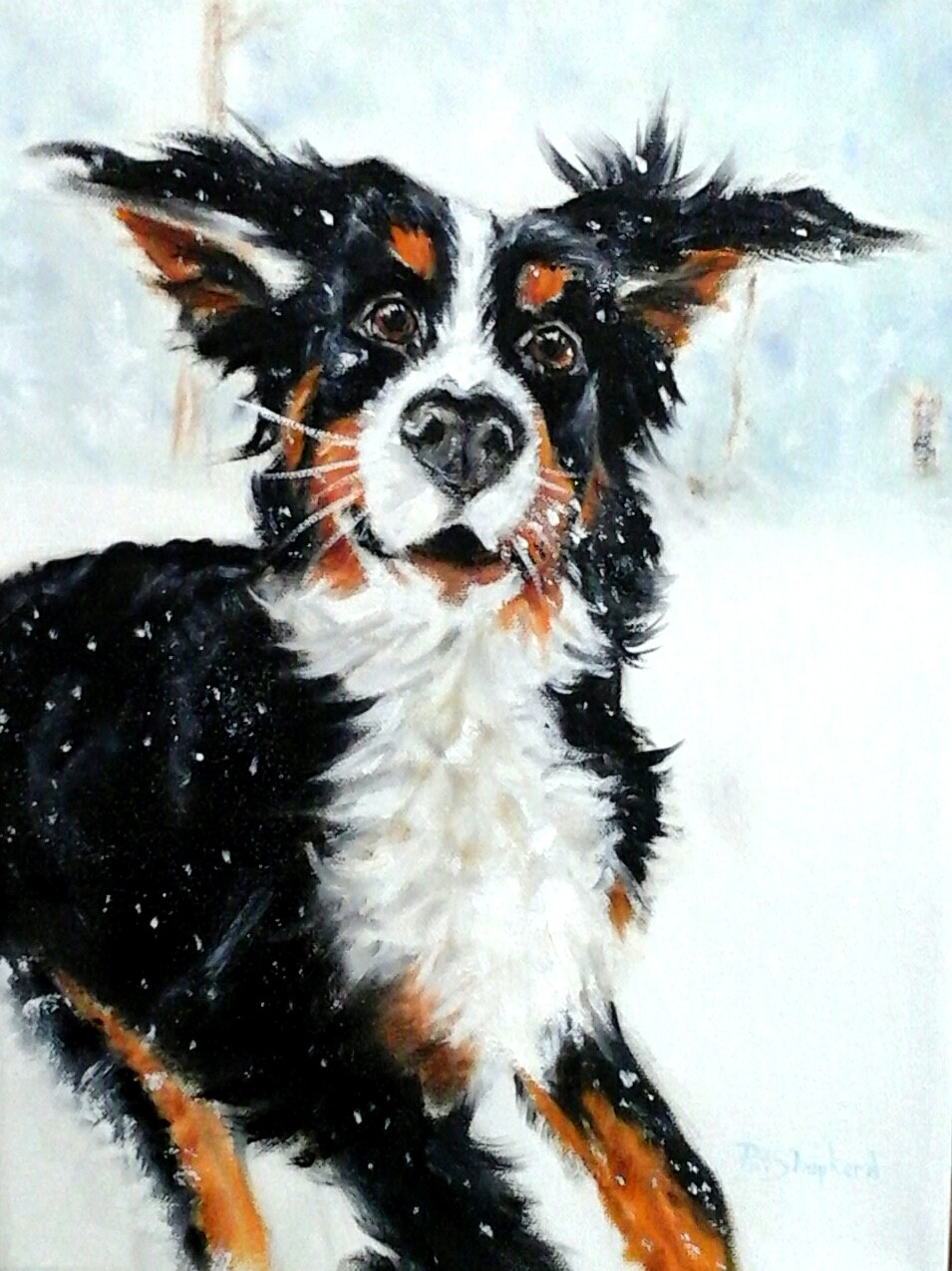
Let’s talk about resilience next – do you have a story you can share with us?
Resilience is essential. When things go wrong, there’s usually a way to work around what’s happened. If you don’t, you’ve given up and that’s not where you want to be.
When framing was too expensive, I took a framing course. When my kids needed huge canvases for their portfolios, we made them together. When they needed work tables for their art, we built them.
When I was injured, I let myself down by feeling sorry for myself. When physiotherapy results were poor and the rebreak made things worse, I was absolutely discouraged. When I couldn’t sign my name on a painting, I learned to sign from above with a damp cloth to wipe away mistakes sometimes multiple times. When I went from typing 90wpm to 7wpm, I practised til I got back up to 70wpm.
When I couldn’t paint how I wanted, I adapted to painting how I could. Am I frustrated at times? Yes. But giving up is not an option. That doesn’t mean I’m brave. It means I keep trying because that’s how I’ve always been.
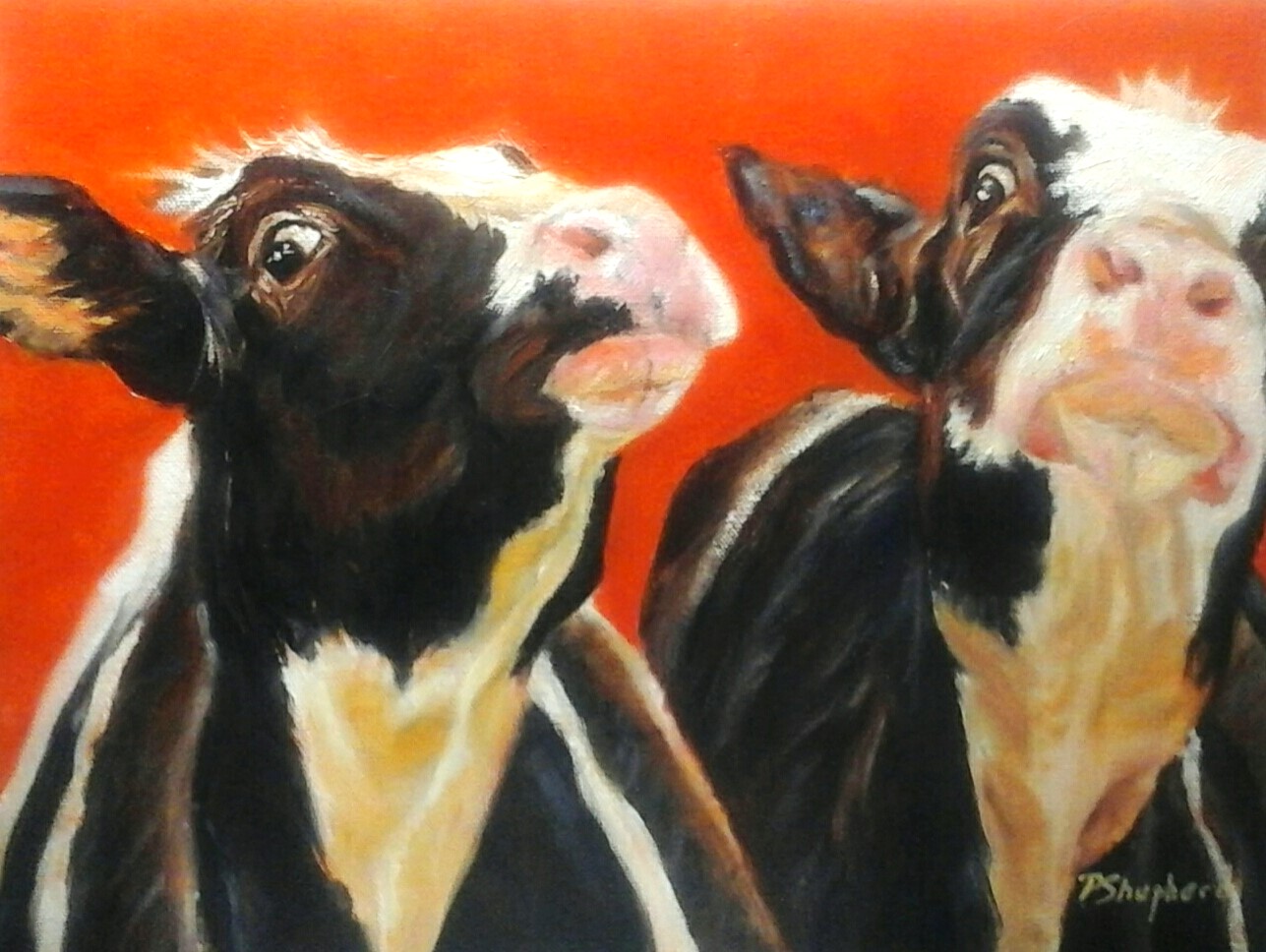
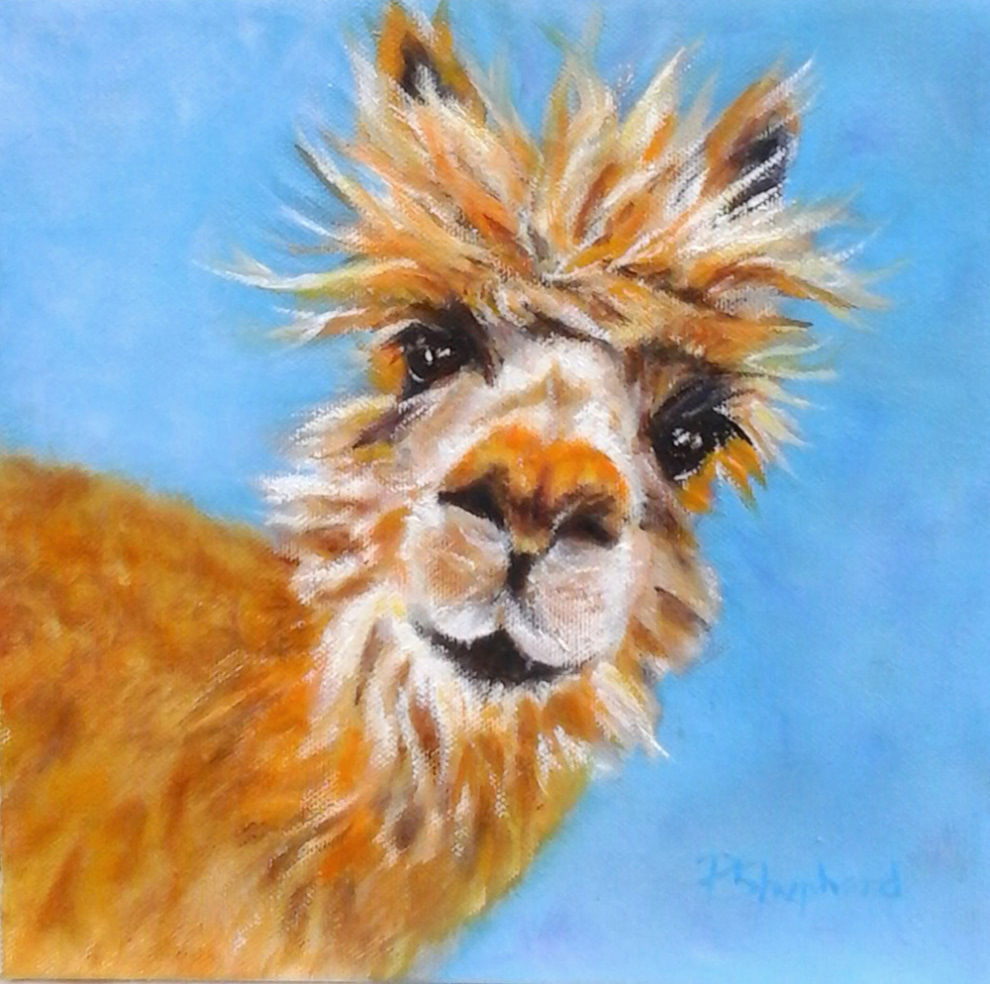
For you, what’s the most rewarding aspect of being a creative?
The most rewarding aspect of being an artist is when a viewer has a deeply emotional response to what I’ve painted. When they stop and take in what I’ve created or make a comment that shows they’ve connected.
I can express what I want to express, in the way I want to. It’s my choice to choose the subject, to approach the creation, to feel that I’ve accomplished what I wanted to show. When someone smiles, finds joy, feels the memory, it’s the best feeling.
Contact Info:
- Instagram: https://www.instagram.com/pshepart/?hl=en
- Facebook: https://www.facebook.com/pat.shepherd.16/?viewas=100000686899395
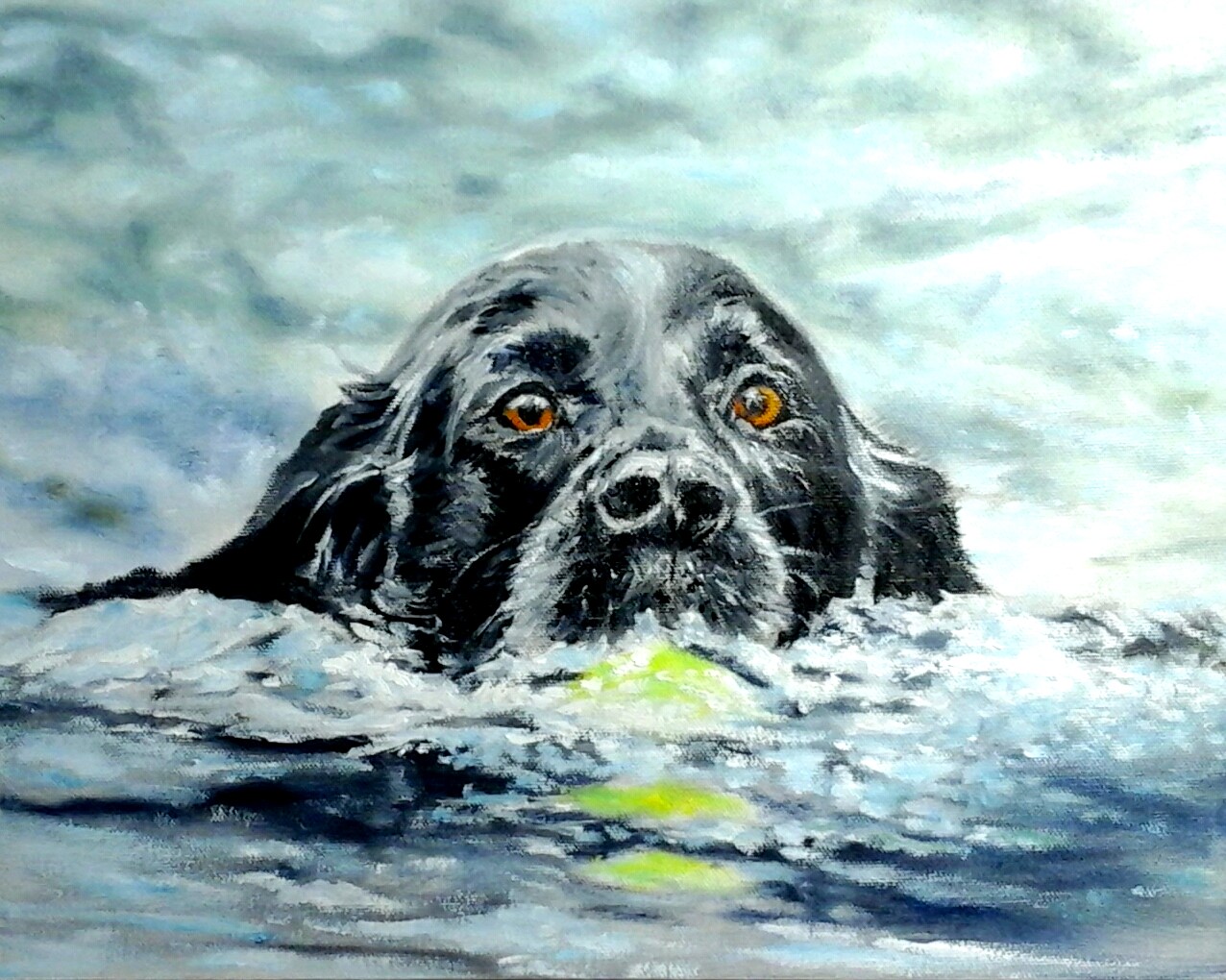
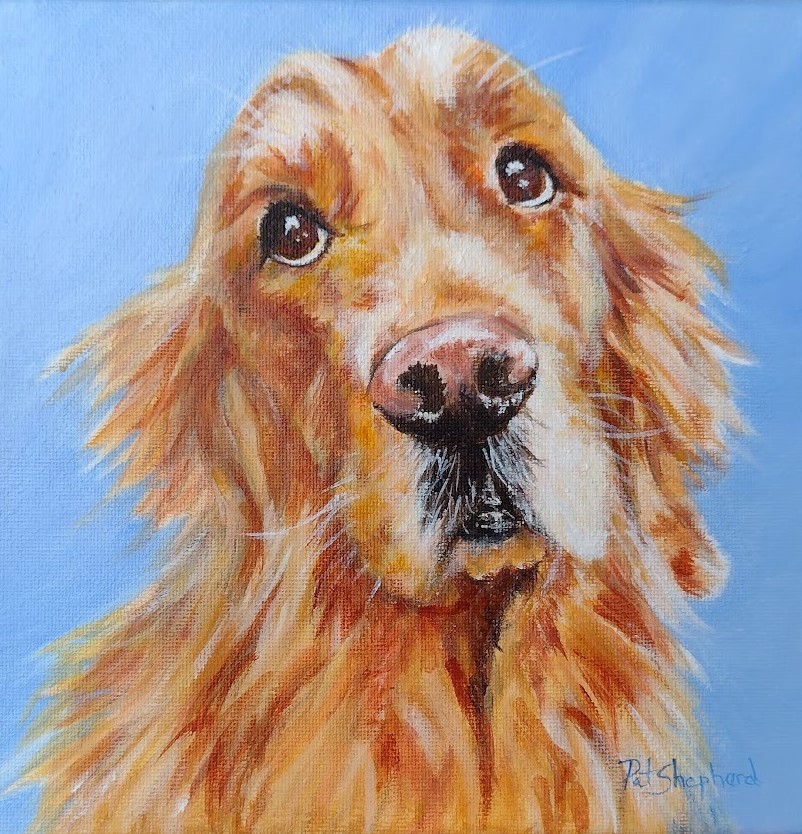
Image Credits
1. Jack Shepherd 2. Harry Reid 3. Pat Shepherd 4. Anastasiia Taraso 5.Tracey Hollis Rowe 6.Jennifer Reed 7. Paul Sherman 8. Pat Shepherd


